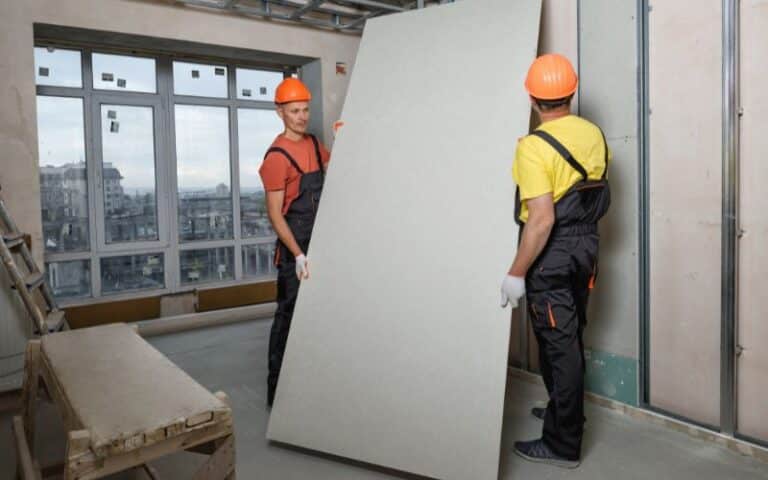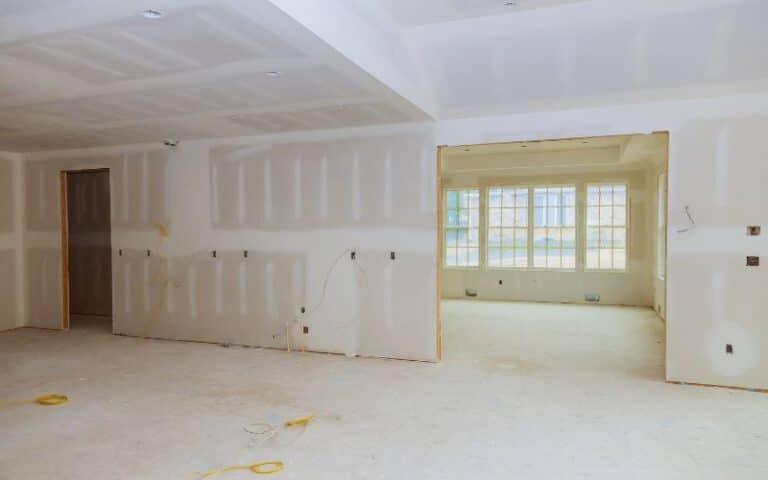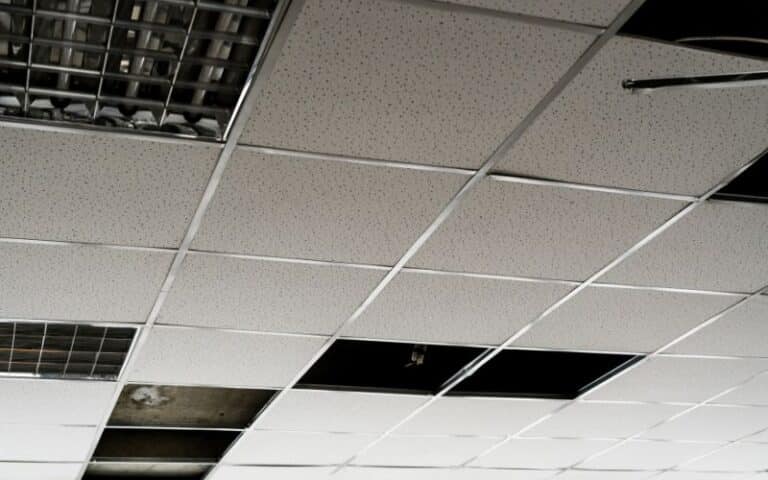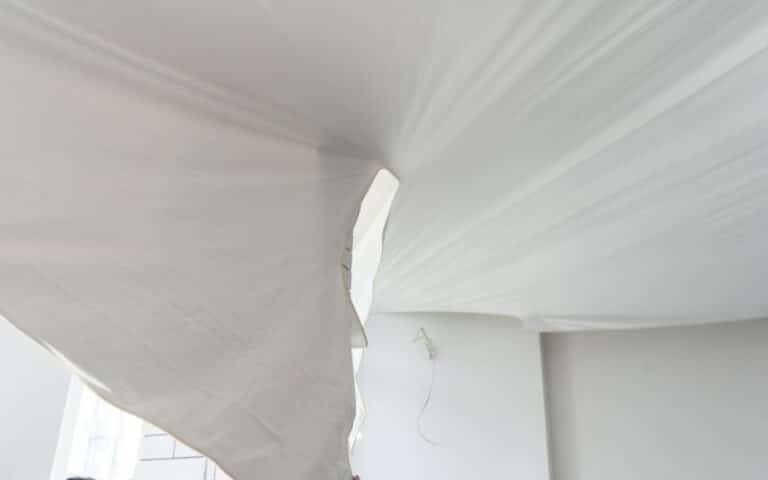Drywall is an indispensable construction material that many homeowners utilize in their homes due to its versatility and efficiency.
Coupled with its unique features, it comes in different forms, including fire-resistant and regular drywall.
So you might be perplexed when it comes to choosing the best drywall for your home.
Nonetheless, let’s look at fire-resistant and regular drywall.
Fire-resistant drywall is an excellent material with more fire-resistant properties, and you can utilize it for many construction projects. However, regular drywall does not have high fire-resistant properties, but you can use it to carry out any construction projects.
This article will explain the differences between fire-resistant and regular drywall, when to use them, and much more. So hold on tight, and let’s explore further!
Ready for a Drywall Quiz?
What Is the Difference Between Fire Resistant and Regular Drywall?
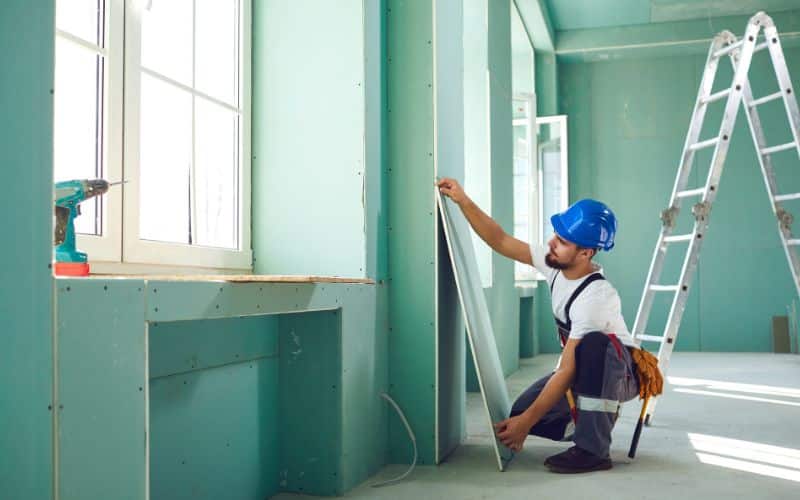
Drywall is the first thing that comes to every homeowner’s mind whenever they hear or think of construction materials for the interior of their homes.
They become perplexed when they want to purchase the best drywall for their homes.
And that’s where fire-resistant and regular drywall comes in, as they are excellent choices. But what is the difference between them? Let’s find out!
Fire-resistant drywall possesses naturally occurring fire-resistant properties and special additives that increase its ability to resist fire and offer protection for a long time.
On the other hand, regular drywall only contains naturally occurring fire-resistant properties that offer a short duration of protection from fire.
Fire-resistant drywall sheets usually provide ⅝ inch of thickness, whereas regular drywall offers ½ inch.
Furthermore, fire-resistant drywall offers 60 minutes of protection, while regular drywall offers only 30 minutes.
Admittedly, some homeowners are unaware of the types of drywall available. Hence, they tend to purchase regular drywall for every construction project.
Although regular drywall is an exceptional material, it doesn’t suit and last long in certain areas.
For instance, using regular drywall in a place that is constantly exposed to fire or heat can be disastrous.
Suppose you use regular drywall around a furnace; it’ll not last, as any mistake will set the place ablaze, leaving you with little time to save lives.
Furthermore, many properties in your home will burn as the fire will undoubtedly spread to other parts of your home.
With this in mind, it’s best to settle for fire-resistant drywall that offers 1 hour of protection, giving you time to save lives and some important properties.
Nonetheless, this boils down to personal preferences and the ability to handle these materials.
With proper maintenance, you can use either fire-resistant or regular drywall for the interior of your home.
Let’s look at a summary of the differences between fire-resistant and regular drywall in the table below.
| Fire Resistant Drywall | Regular Drywall |
|---|---|
| It contains naturally occurring fire-resistant properties and additives. | It only has naturally occurring fire-resistant properties. |
| It offers protection for 60 minutes. | It offers protection for 30 minutes. |
| It provides ⅝ inch of thickness. | It provides ½ inch of thickness. |
When Should You Use Fire Resistant Drywall?
Fire-resistant drywall is an exceptional construction material that offers ⅝ inch thickness and highly resistant properties.
Furthermore, it offers 60 minutes of protection from fire. With these points established, you may wonder when to use fire-resistant drywall.
Fire-resistant drywall contains certain additives like fiberglass; hence, during construction, you might need many layers of the material for a lasting effect.
You can use aire-resistant drywall when you want to build a basement. Basements are usually cold and dark but serve as a proper storage room.
Hence, many things can go wrong if you don’t build the basement carefully with the right materials. The fire-resistant drywall is excellent for the ceiling and walls of your basement.
Furthermore, you can utilize mold-resistant and soundproof drywall in addition to tire-resistant drywall for a balanced structure.
If you want to supply electricity to your basement, you must keep things like diesel and petrol away.
The reason for this is that any slight electrical fault from your home can adversely affect your basement, thereby creating a fire.
And that’s why many cases of fire outbreaks usually start from such places in the home.
Hence, it’s best to keep diesel and petrol in other dry storage spaces that don’t have electrical connections.
These places include your garage, outdoor shed, and many others. On the other hand, you can use fire-resistant drywall in your garage, especially your kitchen.
Your kitchen is that part of your home that usually encounters fire anytime you want to cook. Thereby making it highly susceptible to fire outbreaks.
In this case, fire-resistant drywall can prevent the fire from spreading for at least 1 hour, giving you time to quench the fire before a disaster occurs.
This point highlights the importance of a fire extinguisher in your home. When a fire breaks out in your home, little water will be unable to quench the fire.
But a fire extinguisher can extinguish the fire, saving lives and properties. Hence, it’s advisable to purchase a fire extinguisher and keep it close by for any emergency.
When Can You Use Regular Drywall?
Regular drywall is another excellent construction material that blends well with every construction project making it versatile and efficient.
Although regular drywall doesn’t contain high fire-resistant properties, it doesn’t overshadow other unique features of the material.
The versatility of drywall makes it every homeowner’s choice, as it is easy to work with and suits many homes.
For example, you can use regular drywall for the ceiling and walls in your living room. Your living room is that part of your home that offers comfort and peace of mind.
It contains a soft couch that you can lie on after a stressful day at work. And the television that you can enjoy with your family and friends.
Most importantly, it’s the first place many people focus on when they enter your home. Their gaze moves back and forth between your walls, ceilings, and arrangement.
Therefore, you must leave a strong and lasting impression with your interior design; regular drywall helps you accomplish this task.
Using drywall for the walls and ceiling of your home allows you to manipulate the interior design.
You can easily replace the drywall when it’s old and use fresh/new paint to recreate your interior decór to your taste. Similarly, you can use regular drywall in your bedroom.
Using regular drywall in your bedroom also allows you to decorate your room to your taste. You can apply many layers of regular drywall and use just the right finishing touches.
Furthermore, regular drywall allows you to install pocket doors in your home.
For instance, regular drywall is your best bet if you want to create more space in your bedroom or another door that leads to a room.
This way, you don’t have to break down certain rooms in your home to create space, thereby saving money and resources.
In addition, you can use regular drywall for the walls and ceiling in your dining area/room.
Nonetheless, you must purchase regular drywall of high quality to achieve these tasks and for a lasting impact.
Is Fire Resistant Drywall Worth It?
Fire-resistant drywall is worth every penny as it provides a long duration of protection from fire.
You can utilize fire-resistant drywall in many places that are highly susceptible to fire. However, you must purchase a fire-resistant drywall of high quality to achieve this goal.
Using a fire-resistant drywall of low quality will not do any good and may only lead to inevitable disaster.
In this case, you might purchase regular drywall, thinking that it’s a fire-resistant drywall of low quality. However, it begins to show dire effects when it catches fire easily.
Hence, the best way to know a high-quality fire-resistant drywall is by checking the thickness.
Fire-resistant drywall usually has a thickness of ⅝ inch. Therefore, if the thickness is less than ⅝ inch, it’s low-quality.
Plus, you can check for fire-resistant additives like fiberglass. If it doesn’t contain these additives, it’s not of good quality.
Furthermore, if you’re going to use fire-resistant drywall in commercial places like a store or work buildings, it’s crucial to check its quality.
These buildings are critical areas, and any slight mistake can cause a huge catastrophe.
So it’s best always to purchase high-quality fire-resistant drywall for important construction projects.
What Is the Best Drywall for Fire Rating?
Different types of drywall come in various forms, sizes, and thicknesses and possess different fire ratings. Type C drywall is the best to consider when considering fire rating.
Although type X drywall is an excellent choice, it offers less fire protection than type C.
Type C drywall contains high fire-resistant properties and additives that offer a long duration of protection.
Hence, if you’re considering are-resistant drywall for your building or store, type C is the best choice.
Nonetheless, you can settle for any drywall of your choice, provided you adopt the right maintenance practices.

